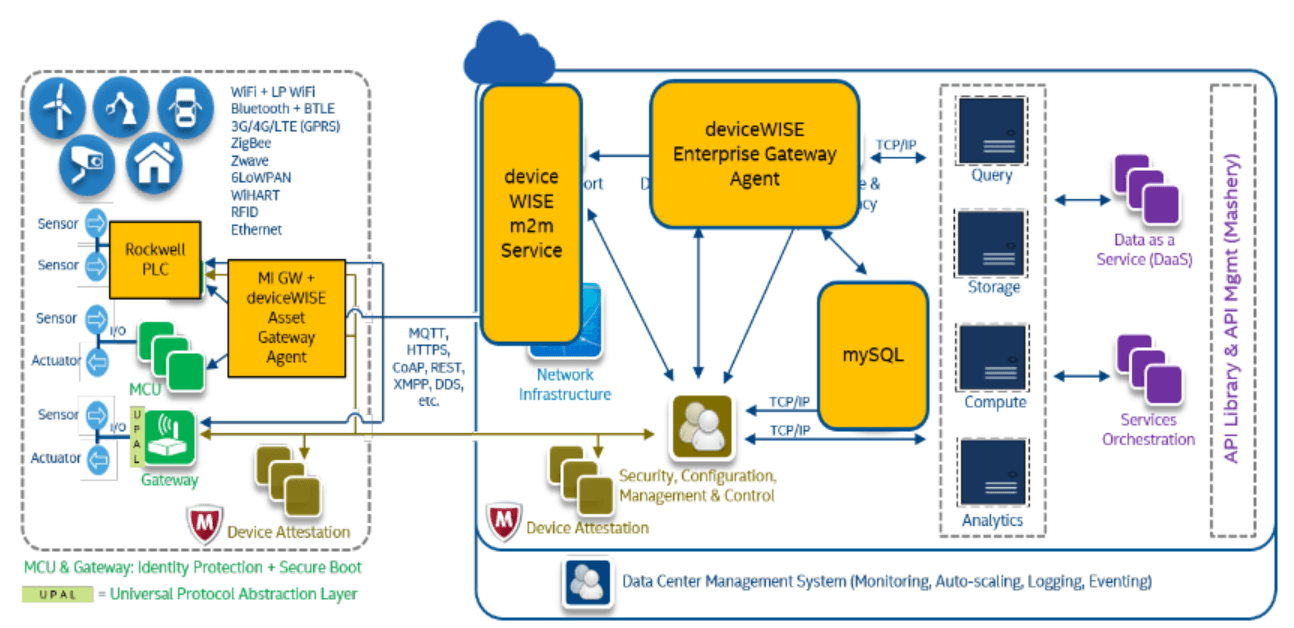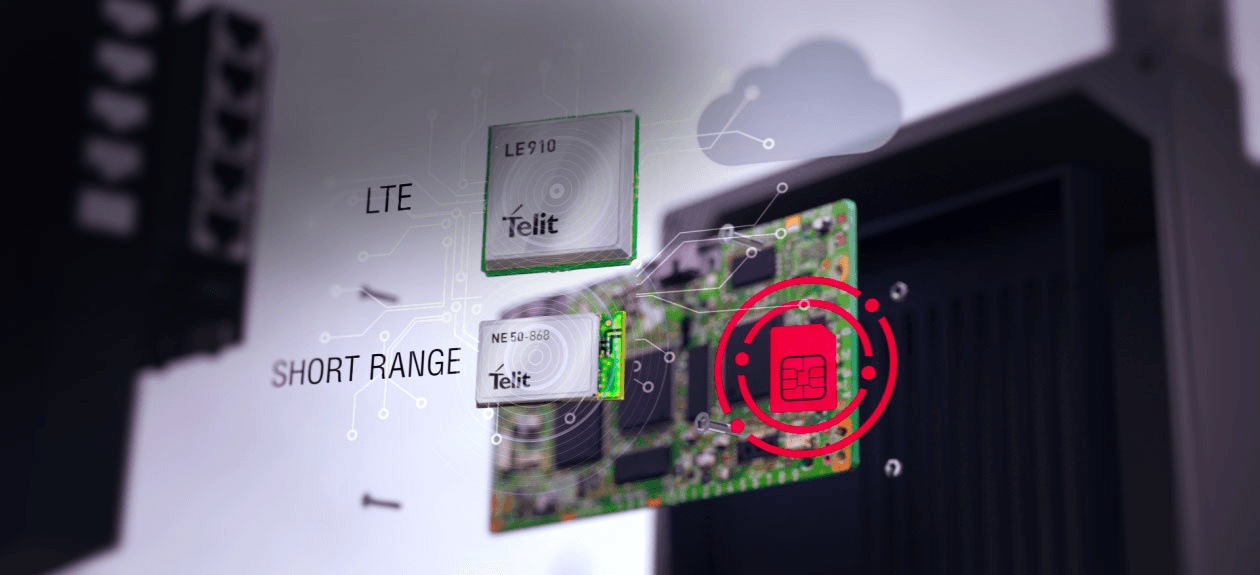As more sensor nodes connect over wireless networks, there is a growing need for alternatives to interfaces like Wi-Fi*, Bluetooth*, and ZigBee*. Many Internet of Things (IoT) applications require lower cost and power consumption, longer range, and an improvement in the number of devices per router or aggregation point.
LoRa and LTE Cat. 1 are emerging as two leading alternatives. While these are proving successful as interfaces, there are still questions about interoperability, security, and manageability—and these are being addressed through gateways based on the Intel® IoT Platform.
LoRa connects many devices over long ranges
LoRa (short for Long Range) is a low-power specification designed for battery-operated devices (Figure 1). A typical interface can handle about 65,500 end devices with a range of up to 50 km and data rates up to 50 Kbit/s. Combined with localization capability, it is easy to see why LoRa is so attractive for long-range, low-power IoT sensing applications.

On top of the LoRA physical layer (PHY) sits the LoRaWAN media access control (MAC), which controls both the PHY layer and access to the backhaul network. LoRaWAN uses an adaptive data rate (ADR) mechanism and star-of-stars topology to ensure scalability as the number of nodes increases.
A LoRa gateway may need to aggregate data from other networks, including Bluetooth and Wi-Fi, and perform data conditioning and other number-crunching. Thus, a LoRa gateway may need high performance in addition to the aforementioned security, scalability, and manageability.
A good example is the SGWMC-X86LR-12132 Gateway from EXPEMB (Figure 2). It is designed for scalability and to support multiple interfaces and software services. In addition to LoRa, this gateway supports a 1-Gbit Ethernet link, Wi-Fi, 3G/4G, and Bluetooth, simultaneously. This gateway's support of multiple wireless interfaces is critical as not all radio protocols support IP natively, so the gateway functions as both an aggregator and IP translator.
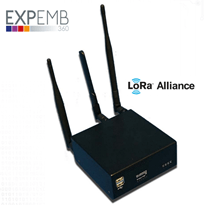
To enable this rich functionality, the gateway is built on the Intel® Atom™ processor E3800 product family. With up to 4 speedy cores, the Intel® Atom™ processor has plenty of performance for aggregation and translation. This performance also supports the gateway's software services, including remote firmware updates and multiple layers of security, such as TLS and IPSec.
While LoRA is the newest of the long-range IoT connectivity specifications, cellular network providers are working hard to lower power and cost to provide IoT connections over licensed bands. This is important because LoRa uses unlicensed bands. In theory, using licensed bands reduces interference and makes for more reliable connections, with higher data rates.
The LE910 series of modules from Telit support one such interface: LTE Cat. 1 (Figure 3). The module supports the category's full 10-Mbit/s downlink and 5-Mbit/s uplink speeds and is optimized for both Verizon and AT&T.
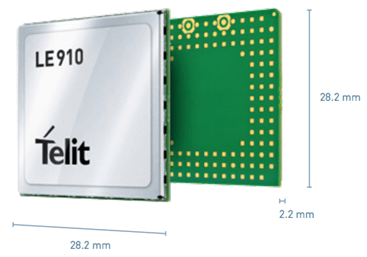
The module comes with IP support, as well as UDP/IP stacks and HTTP, SMTP, FTP, and SSL. It also supports a host of services such as module management that make IoT deployments under mobile networks more effective. Other features include multi-constellation (GPS + GLONASS) positioning, over-the-air firmware updates, and MIMO and receiver diversity support.
The module can be used in gateways like Quanmax UbiQ-100 Series (Figure 4). In addition to the built-in features like an Intel® Atom™ processor, HDMI, USB 3.0, USB 2.0, and COM ports, Quanmax offers integration services to incorporate custom features like LTE modules.
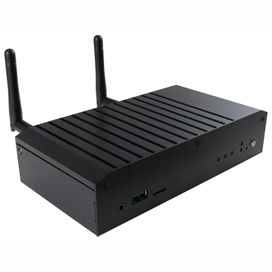
The Quanmax gateway is also notable for its software options. Preloaded options include security management; remote monitoring management; wireless monitoring; data collection & translation; and more.
Wireless options for billions of nodes
As the IoT grows to billions of nodes—including countless wireless sensors—it is becoming more important than ever to make sure the right networks are applied to each application. LoRa and LTE Cat.1 are just two of the leading options for wireless sensors. To see more ideas for wireless connectivity, check out the Solutions Directory listings for wireless access and IoT gateways.

